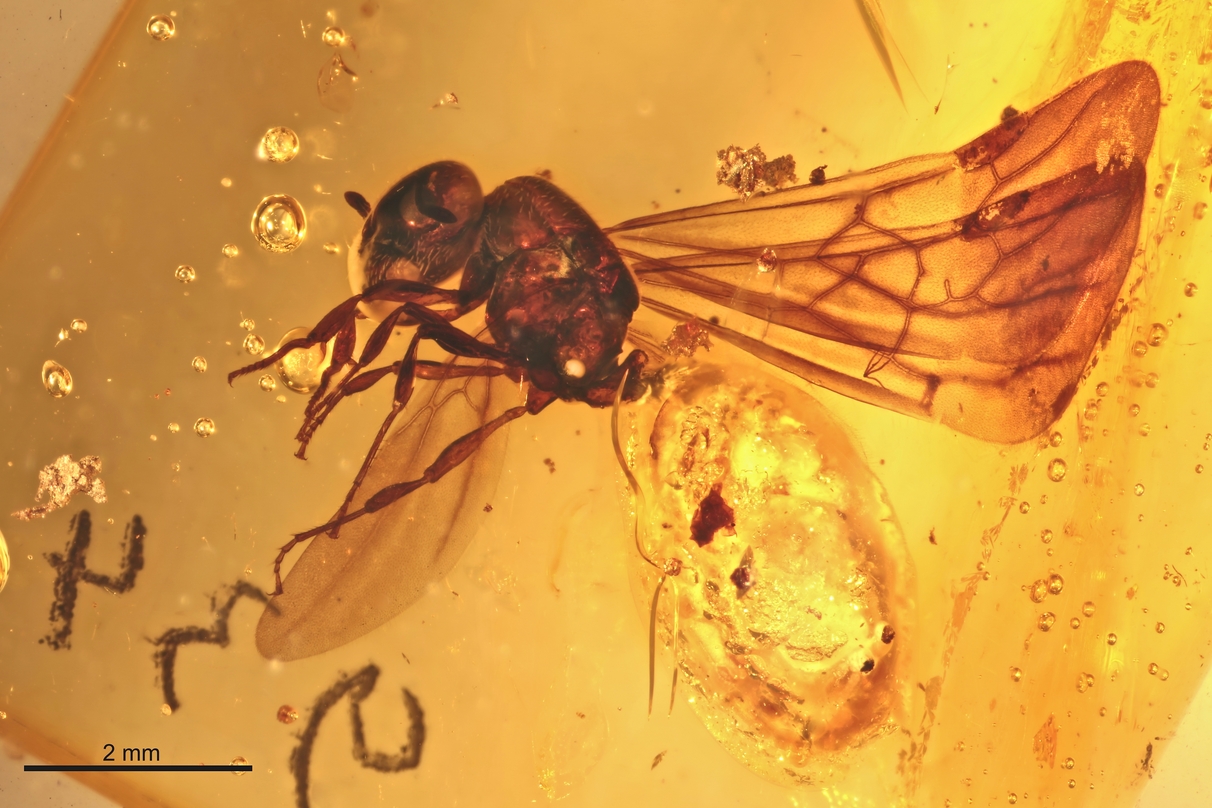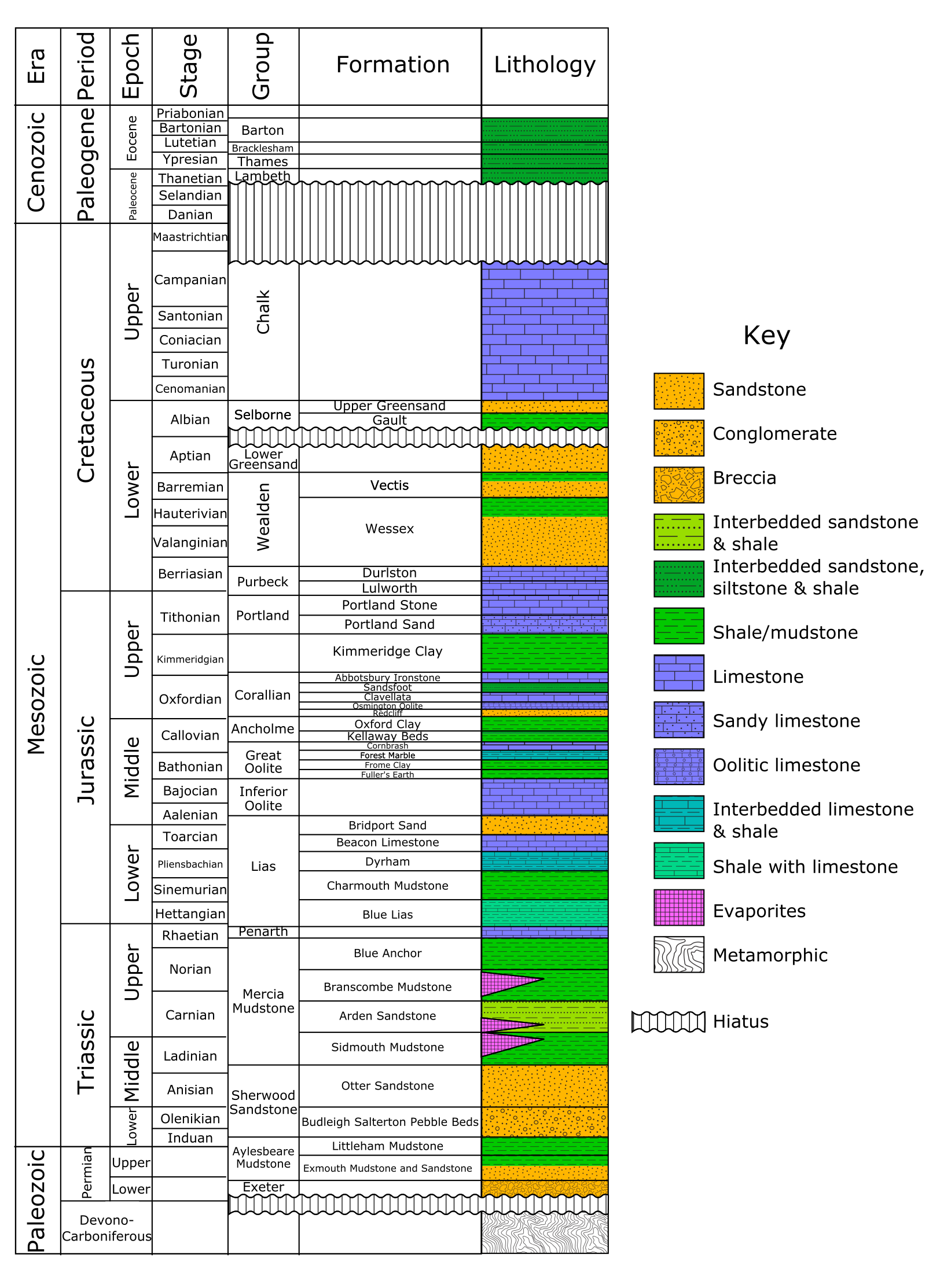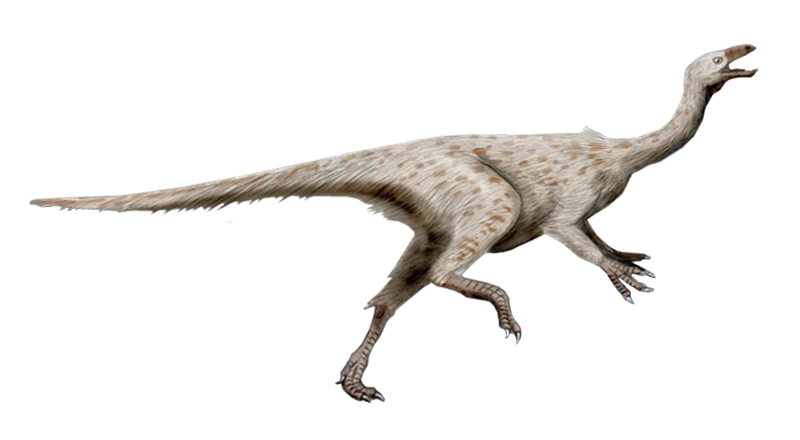|
Calamosaurus
''Calamosaurus'' (meaning "reed lizard") was a genus of small theropod dinosaur from the Barremian-age Lower Cretaceous Wessex Formation of the Isle of Wight, England. It is based on two cervical vertebrae (BMNH R901), collected by Reverend William Fox. History and taxonomy Richard Lydekker came across these bones when cataloguing the Fox collection and named them ''Calamospondylus foxi'', noting their similarity to those of ''Coelurus''.Lydekker. R. (1889). On a coelurid dinosaur from the Wealden. ''Geological Magazine'' 6:119-121. Unfortunately, ''Calamospondylus'' had already been coined in 1866 (ironically by Reverend Fox himself, the very man honored in Lydekker's species name).Fox, W.D. in Anonymous. (1866) Another Wealden reptile. ''Athenaeum'' 2014:740. Lydekker renamed it in 1891 to its present title.Lydekker. R. (1891). On certain ornithosaurian and dinosaurian remains. ''Quarterly Journal of the Geological Society of London'' 47:41-44. He also at this time provisiona ... [...More Info...] [...Related Items...] OR: [Wikipedia] [Google] [Baidu] |
Calamosaurus Vertebra
''Calamosaurus'' (meaning " reed lizard") was a genus of small theropod dinosaur from the Barremian-age Lower Cretaceous Wessex Formation of the Isle of Wight, England. It is based on two cervical vertebrae (BMNH R901), collected by Reverend William Fox. History and taxonomy Richard Lydekker came across these bones when cataloguing the Fox collection and named them ''Calamospondylus foxi'', noting their similarity to those of '' Coelurus''.Lydekker. R. (1889). On a coelurid dinosaur from the Wealden. ''Geological Magazine'' 6:119-121. Unfortunately, ''Calamospondylus'' had already been coined in 1866 (ironically by Reverend Fox himself, the very man honored in Lydekker's species name).Fox, W.D. in Anonymous. (1866) Another Wealden reptile. ''Athenaeum'' 2014:740. Lydekker renamed it in 1891 to its present title.Lydekker. R. (1891). On certain ornithosaurian and dinosaurian remains. ''Quarterly Journal of the Geological Society of London'' 47:41-44. He also at this time provis ... [...More Info...] [...Related Items...] OR: [Wikipedia] [Google] [Baidu] |
1891 In Paleontology
Arthropods Newly named insects Archosauromorphs Newly named dinosaurs Newly named birds {, border="0" style="background:transparent;" style="width: 100%; , - !width="90%", !width="5%", !width="5%", , - , style="border:0px" valign="top", {, class="wikitable sortable" align="center" width="100%" , - ! Name ! Status ! Authors ! Notes , - , ''Dryornis pampeanus'' , Valid , Moreno & Mercerat , , - , ''Neochen debilis'' , Valid , style="border-right:0px" valign="top" , Florentino Ameghino Florentino Ameghino (born Giovanni Battista Fiorino Giuseppe Ameghino September 19, 1853 – August 6, 1911) was an Argentine naturalist, paleontologist, anthropologist and zoologist, whose fossil discoveries on the Argentine Pampas, especially ... , , - References ... [...More Info...] [...Related Items...] OR: [Wikipedia] [Google] [Baidu] |
Wessex Formation
The Wessex Formation is a fossil-rich English geological formation that dates from the Berriasian to Barremian stages (about 145–125 million years ago) of the Early Cretaceous. It forms part of the Wealden Group and underlies the younger Vectis Formation and overlies the Durlston Formation. The dominant lithology of this unit is mudstone with some interbedded sandstones. It is part of the strata of the Wessex Basin, exposed in both the Isle of Purbeck and the Isle of Wight. While the Purbeck sections are largely barren of vertebrate remains, the Isle of Wight sections are well known for producing the richest and most diverse fauna in Early Cretaceous Europe. Nomenclatural History The Wessex Formation has historically alternately been called the "Variegated Marls And Sandstones", a name used by W. J. Arkell in his 1947 map of the Isle of Purbeck as well as the "Wealden Marls" It was given its current formal name by Daley and Stewart in 1979 Stratigraphy and Lithology In ... [...More Info...] [...Related Items...] OR: [Wikipedia] [Google] [Baidu] |
William Fox (palaeontologist)
William Fox (9 August 1813 – 1881) was an English clergyman and palaeontologist who worked on the Isle of Wight and made some significant discoveries of dinosaur fossils. The Reverend William Fox was born in Cumberland on 9 August 1813. He moved to the Isle of Wight in 1862 to take up the post of curate at the Parish church of St Mary the Virgin in Brixton (now known as Brighstone). He resigned his post in 1867 but continued to live in the area to carry on his collecting. In 1875, he became curate of nearby Kingston, near Shorwell.p15 The Complete Dinosaur by James Orville Farlow, M. K. Brett-Surman Although lacking formal scientific training Fox was remarkably astute and discussed his findings with eminent palaeontologists of the day including John Hulke (1830-1895) and Sir Richard Owen (1804-1892). Fox had easy access to Brighstone Bay from his home, Myrtle Cottage in Brighstone, and so spent many an hour collecting fossils, much to the detriment of his pastoral work; in fac ... [...More Info...] [...Related Items...] OR: [Wikipedia] [Google] [Baidu] |
Compsognathidae
Compsognathidae is a family of coelurosaurian theropod dinosaurs. Compsognathids were small carnivores, generally conservative in form, hailing from the Jurassic and Cretaceous Periods. The bird-like features of these species, along with other dinosaurs such as ''Archaeopteryx'' inspired the idea for the connection between dinosaur reptiles and modern-day avian species. Compsognathid fossils preserve diverse integument — skin impressions are known from four genera commonly placed in the group, ''Compsognathus'', ''Sinosauropteryx'', ''Sinocalliopteryx'', and ''Juravenator''.Xu, Xing. "Palaeontology: Scales, feathers and dinosaurs." ''Nature'' 440.7082 (2006): 287-288. While the latter three show evidence of a covering of some of the earliest primitive feathers over much of the body, ''Juravenator'' and ''Compsognathus'' also show evidence of scales on the tail or hind legs. '' Ubirajara'', described in 2020, had elaborate integumentary structures on its back and shoulders superf ... [...More Info...] [...Related Items...] OR: [Wikipedia] [Google] [Baidu] |
Basal (phylogenetics)
In phylogenetics, basal is the direction of the ''base'' (or root) of a phylogenetic tree#Rooted tree, rooted phylogenetic tree or cladogram. The term may be more strictly applied only to nodes adjacent to the root, or more loosely applied to nodes regarded as being close to the root. Note that extant taxa that lie on branches connecting directly to the root are not more closely related to the root than any other extant taxa. While there must always be two or more equally "basal" clades sprouting from the root of every cladogram, those clades may differ widely in taxonomic rank, Phylogenetic diversity, species diversity, or both. If ''C'' is a basal clade within ''D'' that has the lowest rank of all basal clades within ''D'', ''C'' may be described as ''the'' basal taxon of that rank within ''D''. The concept of a 'key innovation' implies some degree of correlation between evolutionary innovation and cladogenesis, diversification. However, such a correlation does not make a given ca ... [...More Info...] [...Related Items...] OR: [Wikipedia] [Google] [Baidu] |
Coelurosauria
Coelurosauria (; from Greek, meaning "hollow tailed lizards") is the clade containing all theropod dinosaurs more closely related to birds than to carnosaurs. Coelurosauria is a subgroup of theropod dinosaurs that includes compsognathids, tyrannosaurs, ornithomimosaurs, and maniraptorans; Maniraptora includes birds, the only known dinosaur group alive today. Most feathered dinosaurs discovered so far have been coelurosaurs. Philip J. Currie had considered it likely and probable that all coelurosaurs were feathered. However, several skin impressions found for some members of this group show pebbly, scaly skin, indicating that feathers did not completely replace scales in all taxa. In the past, Coelurosauria was used to refer to all small theropods, but this classification has since been abolished. Anatomy Bodyplan The studying of anatomical traits in coelurosaurs indicates that the last common ancestor had evolved the ability to eat and digest plant matter, adapting to an omniv ... [...More Info...] [...Related Items...] OR: [Wikipedia] [Google] [Baidu] |
Ornithomimosauria
Ornithomimosauria ("bird-mimic lizards") are theropod dinosaurs which bore a superficial resemblance to the modern-day ostrich. They were fast, omnivorous or herbivorous dinosaurs from the Cretaceous Period (geology), Period of Laurasia (now Asia, Europe and North America), as well as Africa and possibly Australia. The group first appeared in the Early Cretaceous and persisted until the Late Cretaceous. Primitive members of the group include ''Nqwebasaurus'', ''Pelecanimimus'', ''Shenzhousaurus'', ''Hexing'' and ''Deinocheirus'', the arms of which reached 2.4 m (8 feet) in length. More advanced species, members of the family Ornithomimidae, include ''Gallimimus'', ''Struthiomimus'', and ''Ornithomimus''. Some paleontologists, like Paul Sereno, consider the enigmatic Alvarezsauridae, alvarezsaurids to be close relatives of the ornithomimosaurs and place them together in the superfamily Ornithomimoidea (see classification below). Description The skulls of ornithomimosaurs ... [...More Info...] [...Related Items...] OR: [Wikipedia] [Google] [Baidu] |
Biped
Bipedalism is a form of terrestrial locomotion where an organism moves by means of its two rear limbs or legs. An animal or machine that usually moves in a bipedal manner is known as a biped , meaning 'two feet' (from Latin ''bis'' 'double' and ''pes'' 'foot'). Types of bipedal movement include walking, running, and hopping. Several groups of modern species are habitual bipeds whose normal method of locomotion is two-legged. In the Triassic period some groups of archosaurs (a group that includes crocodiles and dinosaurs) developed bipedalism; among the dinosaurs, all the early forms and many later groups were habitual or exclusive bipeds; the birds are members of a clade of exclusively bipedal dinosaurs, the theropods. Within mammals, habitual bipedalism has evolved multiple times, with the macropods, kangaroo rats and mice, springhare, hopping mice, pangolins and hominin apes (australopithecines, including humans) as well as various other extinct groups evolving the trait ... [...More Info...] [...Related Items...] OR: [Wikipedia] [Google] [Baidu] |
Nomen Dubium
In binomial nomenclature, a ''nomen dubium'' (Latin for "doubtful name", plural ''nomina dubia'') is a scientific name that is of unknown or doubtful application. Zoology In case of a ''nomen dubium'' it may be impossible to determine whether a specimen belongs to that group or not. This may happen if the original type series (i. e. holotype, isotype, syntype or paratype) is lost or destroyed. The zoological and botanical codes allow for a new type specimen, or neotype, to be chosen in this case. A name may also be considered a ''nomen dubium'' if its name-bearing type is fragmentary or lacking important diagnostic features (this is often the case for species known only as fossils). To preserve stability of names, the ''International Code of Zoological Nomenclature'' allows a new type specimen, or neotype, to be chosen for a ''nomen dubium'' in this case. 75.5. Replacement of unidentifiable name-bearing type by a neotype. When an author considers that the taxonomic identity of a ... [...More Info...] [...Related Items...] OR: [Wikipedia] [Google] [Baidu] |
Agility
Agility or nimbleness is an ability to change the body's list of human positions, position quickly and requires the integration of isolated movement skills using a combination of balance (ability), balance, coordination (physiology), coordination, speed, reflexes, physical strength, strength, and endurance. More specifically, it is dependent on: * Balance – The ability to maintain equilibrium when stationary or moving (i.e. not to fall over) through the coordinated actions of our sensory functions (eyes, ears and the proprioceptive organs in our joints); * Static balance – The ability to retain the center of mass above the base of support in a stationary position; * Dynamic balance – The ability to maintain balance with body movement; * Speed - The ability to move all or part of the body quickly; * Strength - The ability of a muscle or muscle group to overcome a resistance; and lastly, * Coordination – The ability to control the movement of the body in co-operation with the ... [...More Info...] [...Related Items...] OR: [Wikipedia] [Google] [Baidu] |








